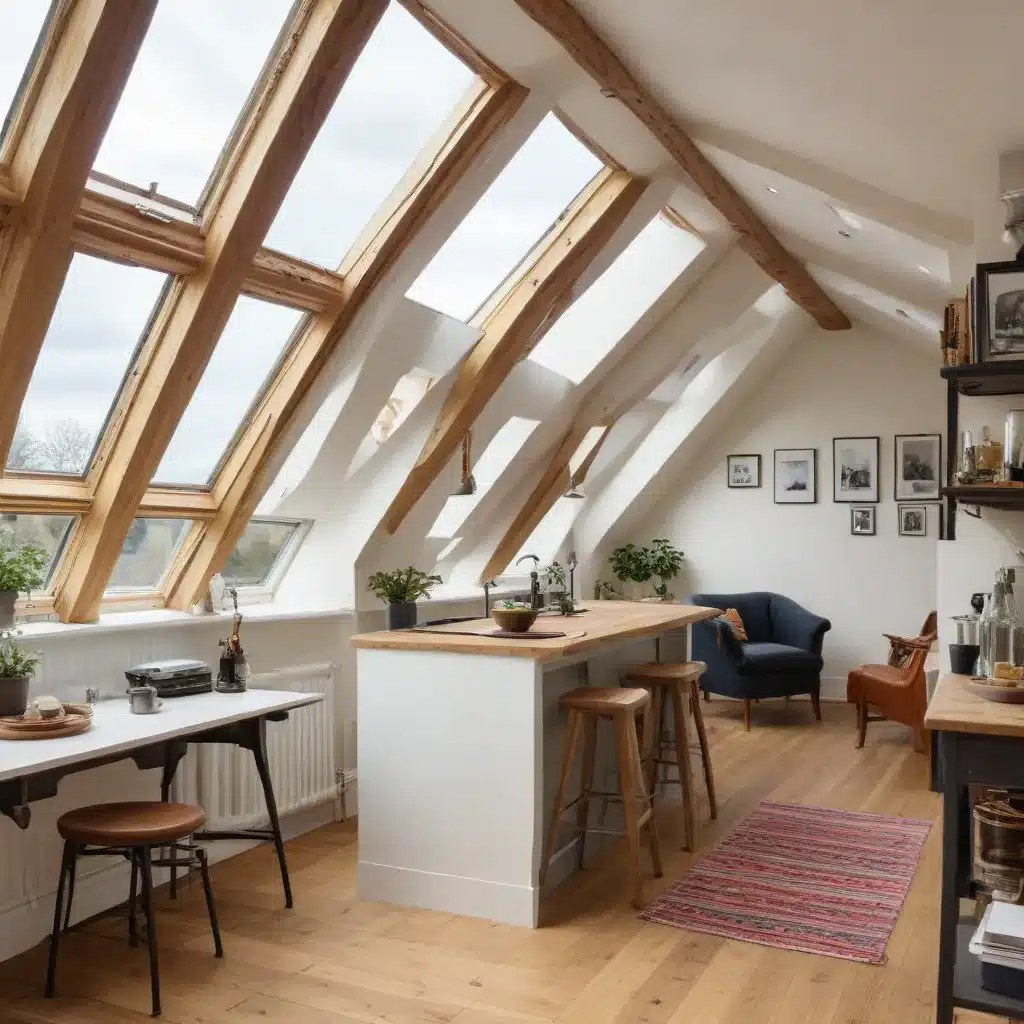
Unlocking the Potential of Unused Spaces
As a seasoned construction professional and interior designer, I’ve had the privilege of witnessing the remarkable transformations that can occur when homeowners embrace the concept of loft conversions. These once-overlooked spaces hold the power to breathe new life into a property, blending the allure of vintage charm with the comforts of modern living.
In this article, we’ll explore the art of loft conversions, providing practical insights and design strategies to help you unlock the hidden potential of your home. Whether you’re seeking to create an inviting guest suite, a serene home office, or a versatile multi-purpose room, the loft presents a world of possibilities.
Embracing the Loft’s Unique Character
One of the most captivating aspects of loft conversions is the inherent character and charm these spaces possess. Lofts often boast elements like exposed beams, vaulted ceilings, and industrial-inspired features, lending an air of rustic elegance that resonates with many homeowners.
When approaching a loft conversion project, it’s crucial to embrace these unique architectural elements and celebrate them as the centerpiece of your design. By highlighting the loft’s vintage charm, you can create a harmonious blend of old and new, seamlessly integrating modern amenities while preserving the essence of the space.
Maximizing Space and Functionality
Lofts, by their very nature, present both opportunities and challenges when it comes to space planning and functionality. The key is to approach the design process with a keen eye for detail and a deep understanding of the homeowner’s needs.
One effective strategy is to carefully analyze the loft’s dimensions and layout, identifying ways to maximize the available square footage. This may involve incorporating cleverly designed storage solutions, strategic placement of furniture, and the incorporation of multi-purpose furnishings that serve dual functions.
For instance, built-in shelving units along the walls can provide ample storage without encroaching on the overall living space. Likewise, a murphy bed or a transforming coffee table that doubles as a dining surface can help optimize the room’s versatility.
Balancing Natural Light and Privacy
Lofts often boast an abundance of natural light, courtesy of their windows and skylights. This natural illumination can be a valuable asset, creating a sense of openness and airiness that enhances the overall ambiance of the space.
However, the challenge lies in striking the right balance between natural light and privacy. Carefully curated window treatments, such as adjustable blinds or strategically placed partitions, can help you control the flow of light and maintain a sense of seclusion when desired.
Additionally, the strategic placement of furniture and the incorporation of architectural elements, such as half-walls or sliding doors, can help define distinct zones within the loft, ensuring privacy for areas like the bedroom or home office.
Embracing Sustainable Design Principles
As a construction professional and interior designer, I’m a strong advocate for incorporating sustainable design principles into loft conversion projects. By making eco-friendly choices, you can not only reduce your environmental impact but also create a healthier, more energy-efficient living space.
One approach is to explore the use of reclaimed or repurposed materials in your loft conversion. From salvaged wood beams to upcycled industrial fixtures, these elements can add character and authenticity to your design while minimizing waste.
Additionally, consider implementing energy-efficient lighting solutions, such as LED bulbs or smart home automation systems, to optimize the loft’s energy usage. Proper insulation and ventilation techniques can also enhance the loft’s thermal efficiency, ensuring a comfortable living environment throughout the year.
Blending the Old and the New
The true magic of a successful loft conversion lies in the harmonious blending of the old and the new. By seamlessly integrating vintage charm with modern amenities, you can create a space that is both visually captivating and functionally irresistible.
One way to achieve this balance is to carefully select furnishings and décor that complement the loft’s existing character. Vintage-inspired pieces, such as antique lighting fixtures or rustic furniture, can provide a warm and inviting contrast to the contemporary elements.
Additionally, incorporating natural materials, like exposed brick or reclaimed wood, can help bridge the gap between the loft’s historic character and the modern comforts you desire. The use of these elements can create a sense of continuity, ensuring that the design feels cohesive and intentional.
Embracing the Loft Lifestyle
Loft conversions offer more than just a physical transformation of a space; they often inspire a lifestyle shift as well. By embracing the unique qualities of a loft, homeowners can cultivate a sense of retreat, creativity, and personal expression.
Whether you envision the loft as a serene home office, a cozy guest suite, or a versatile multipurpose room, the key is to tailor the design to your specific needs and preferences. By doing so, you can create a space that not only looks stunning but also enhances your daily living experience.
As you embark on your loft conversion journey, I encourage you to stay open-minded, experiment with different design concepts, and most importantly, have fun with the process. The rewards of transforming an underutilized space into a vibrant, functional, and visually captivating area are truly immeasurable.
For more inspiration and expert guidance on home renovation, building services, sustainable practices, and interior design, I invite you to explore the Local Builder London website. Our team of seasoned professionals is dedicated to helping homeowners like you unlock the full potential of their properties.


